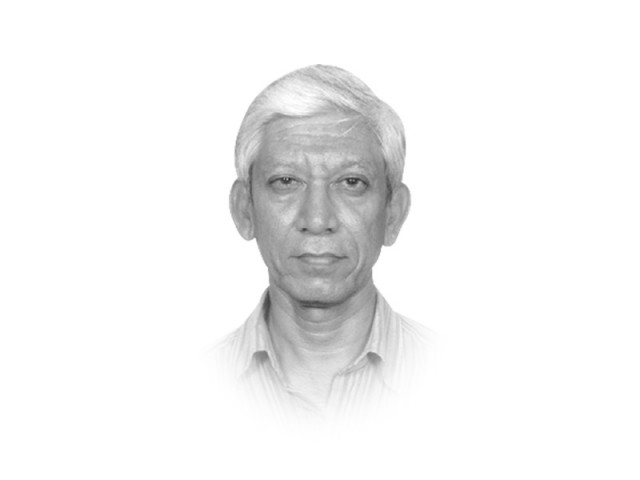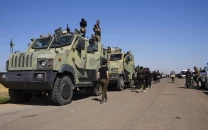The seeds of discontent and conflict
It is worth exploring how the partition contributed to the sowing seeds of discontent among various groups in Punjab

The seeds of discontent and conflict
What is forgotten by these comment writers is that looking at and reassessing past events is an ongoing process which individual researchers and writers find worthwhile in order to get a realistic view of our present. Those who think otherwise would be better advised to simply ignore it.
Last week, I gave an example of the care Ishtiaq Ahmed exercises before drawing a conclusion about a certain sequence of events. To think that the quotes from his book, which cover less than half a page of this 600-page work of formidable social research, were meant as its ‘summary’ would be incorrect as well as unfair. As Dr Tariq Rahman rightly pointed out in his review of the book, the conclusions reached in it “can only be contested by someone who has as formidable a knowledge of this subject as Ishtiaq Ahmed”. He further says, “If we have to exist at all, especially when we are nuclear-armed nations, we need to come to terms with the ghosts of 1947 in order to build a South Asia on the model of the Schengen states.”
What I meant to emphasise through the quotes was that Ishtiaq Ahmed would take great pains to maintain his objectivity by consulting all relevant sources; in the case I mentioned — the massacres in and around Rawalpindi in March 1947 — these included not only the report issued by the All India Congress Committee, but also observations from someone like Justice Muhammad Munir, not to mention the author’s own attempts at visiting the area and interviewing eye-witnesses and victims (who, obviously, live elsewhere). When the good justice — who was appointed to the Punjab Boundary Commission not by the Indian National Congress but by the All India Muslim League and later became the chief justice of Pakistan, not India — wrote in his book that “[t]he disturbances broke out in March 1947 in the district of Rawalpindi and the adjoining areas and the Muslims were the aggressors,” it would take a very obstinate mind not to see the obvious.
But the fact remains that no single book, not even the formidable research undertaken so successfully by Ishtiaq Ahmed, can automatically solve the riddle of the 1947 riots for everyone. It can only serve as a valuable contribution to a quest already going on in an individual citizen’s mind which tries to make sense of the collective past and its connection with the present.
As for myself, the fact brought out by this and other research on the subject that Punjab, unfortunately, suffered the unique case of the Partition riots and total ethnic cleansing on both sides of its dividing line, leads to a further, deeper question: why Punjab?
Here, I would like to introduce another unique fact of the late 19th and early 20th centuries, involving Punjab, which is usually not taken into account when discussing the Partition events. Dr Imran Ali, in his paper “Sikh Settlers in the Western Punjab during British Rule”, summarises some of the findings of his doctoral research published under the title, “The Punjab under imperialism, 1885–1947” on the colonisation of millions of acres of hitherto uncultivated agricultural land situated in the western Punjab under perennial irrigation. This was also something unique to Punjab as no other area in undivided British India underwent this experience.
Dr Imran Ali writes: “These landed resources were transferred predominantly to the more ‘superior’ rural groups: those that were incumbent landholders and were categorised as ‘agricultural castes’ under the Land Alienation Act. The importance of the military in this province was amply reflected in the large, and indeed disproportionate, areas reserved for military functions and personnel. The social origins of grantees and soldiers were similar: both came from the rural elite and the upper levels of village society. The strengthening of these groups had a pronounced impact on the political economy of the Punjab. This was indicated by the relative weakness of nationalism and the continued vibrancy of the British-supported and landlord-led political formation of the Punjab National Unionist Party. Non-landed rural groups also moved to the canal colonies, but they remained as subtenants, labourers or jajmani servitors. Commercial groups also obtained major benefits from agricultural colonisation, with the substantial increase in trade, agro-processing and agricultural credit. Professional elements also benefitted, from expansion in state employment and increased demand for services. Most of these were non-Muslims and they emigrated to Indian territory at Partition. Sikh and Hindu agricultural owners and workers, largely the families of earlier migrants from the east, also had to move to India. This infusion of human skills must have contributed to the vibrancy of agriculture and the secondary sector in post-1947 north-western India. However, the prospect of losing valuable landed and commercial assets, held by their brethren in western Punjab, must have disconcerted agrarian groups in central Punjab during partition. This feeling of losing such major resources could have been an important factor behind the killings and human suffering that accompanied the division of the province.”
It is worth exploring how this particular experiment in social engineering contributed to the sowing of the seeds of discontent among the various groups in Punjab, which was mercilessly exploited during the decade preceding the Partition by political forces bent upon dividing the population on the lines of religious identity.
Published in The Express Tribune, July 14th, 2012.













COMMENTS
Comments are moderated and generally will be posted if they are on-topic and not abusive.
For more information, please see our Comments FAQ